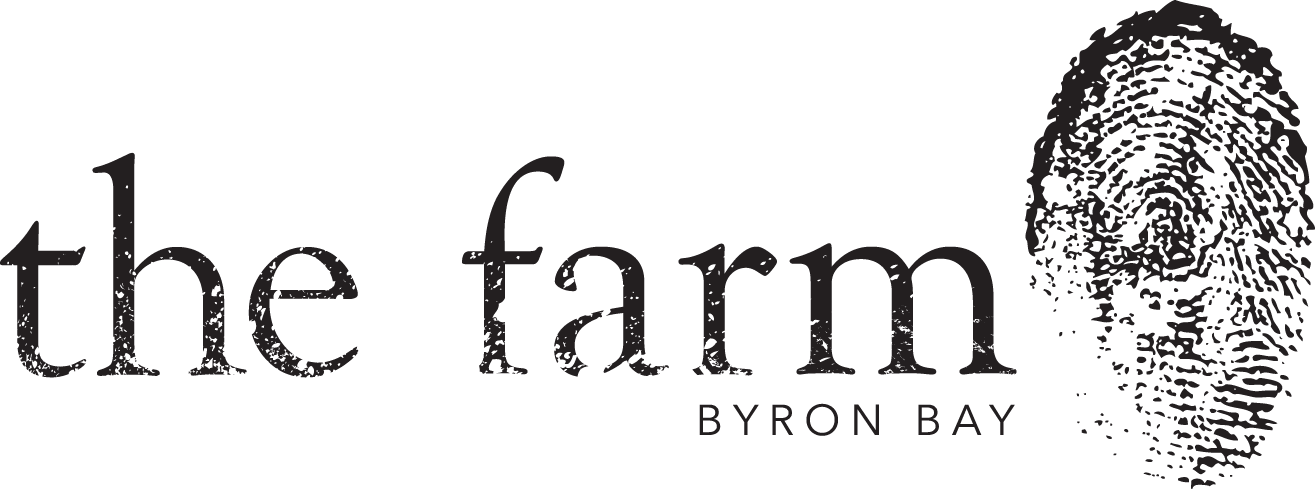What's a Food Forest?
Ever noticed the way that the sun rises and sets in a different place in winter?
Or how the shadows of trees are shorter in summertime, or the way certain species of fungus prefer to grow on exposed tree bark while others prefer damp shaded undergrowth and forest floor? If someone pointed it out, we’d probably nod in agreement.
We might even pause to appreciate the particular beauty of a flower, or the symphony of colours in a well-kept garden. But when it comes to the intricate relationships that exist between soil, plants, sunlight and water, we often just accept these as part of the broader concept of “nature”, without fully acknowledging the cascade of miracles that had to occur for even a single flower to be pollinated.
Unless you’re the co-creators of a dedicated food forest - in which case creating cascades of miracles are your particular breed of specialty.
Bunya and Flavia are resident growers at The Farm, and through decades of experience in permaculture and regenerative growing practices, they’ve created an edible forest that is self-sustaining.
Says Bunya, “The forest grows back well in this area. We’ve moved from grassland soil ecology to a new food forest over the last five years, while increasing and evolving the naturally rich biodiversity and health of our local land”.
The forest has been designed with specific damp zones to promote the growth of certain microfauna, complemented by light zones for taller plants to absorb maximum sunlight, which in turn create sheltered zones for plants that need protection from the elements such as wind and heat.
Lines of trees are planted from east to west or north to south in line with the seasonal aspects of sunlight.
More resilient species such as banana trees become protectors, creating shade for other plant species during the hotter summer months. Upon harvesting, their trunks are broken down and repurposed for soil nourishment, their woody fibres eventually creating microcosms that invite earthworms, bugs, beetles and a variety of fungi to propagate.
Eucalyptus trees provide shelter in the younger years of the food forest, and later become organic matter to support their surrounding neighbours. Cutting down a Eucalyptus or Casuarina tree encourages the trees around it to grow and take up residency in the newly available space.
Native wood trees, jackfruit trees and coffee trees all play an integral role in the development of the food forest, with harvesting at different times of the year allowing each species an opportunity to truly thrive.
Slower growing fruit trees are planted between banana trees, which can take up to 5 or 10 years before fruiting and need support and nourishment until they reach full maturity.
Through natural succession, the plants in the food forest grow in harmony with one another creating shade, shelter and nourishment, eventually arriving at their full potential as an essential part of the forest.
Bunya emphasizes the importance of carbon in growing, and refers to it as the “store of energy in a battery”.
When planting, he considers the opportunities for photosynthesis that each plant is given.
“The surface area of a plant is like a solar panel. We plant with the intention to allow for optimum exposure to sunlight of those plants which are resilient enough to absorb direct sunlight in our local climate. We create shade and dappled light for the plants which need less intensive heat and light. Every plant plays a role in the health of the whole forest”.
This diverse growing environment allows for an abundance of exotic and often hard-to-find foods. The South East Asian and Pacific Island communities are some of the most enthusiastic supporters of the food forest, as it is a source of native cultural foods that are simply not available in mainstream supermarkets.
Everything that happens in the food forest is part of a considered strategy, which takes into account the sustainability and longevity of the soil, the land, the plants, and all species that co-exist upon it.
Through an active volunteer programme, as well as educational workshops and courses such as the ‘Living Agroecology’ Course, Growing Roots Permaculture are at the heart and soul of The Farm at Byron Bay’s philosophy to grow, feed, educate and give back.
If you enjoyed learning about the food forest, you might enjoy the upcoming Caper Byron Bay Event at The Farm where Bunya will join Blair Beattie from Farmers Footprint, food critic Matthew Evans, and nutritionist & best-selling author Cindy O’Meara join together for a panel discussion on the state of food today. This event includes pastries upon arrival from renowned local bakers The Bread Social, an in-depth tour of The Farm and insights into regenerative and sustainable farming, and a feasting lunch courtesy of Three Blue Ducks and prominent chef Darren Robertson.
Follow the story of Growing Roots Permaculture and their work at The Farm at Byron Bay.

